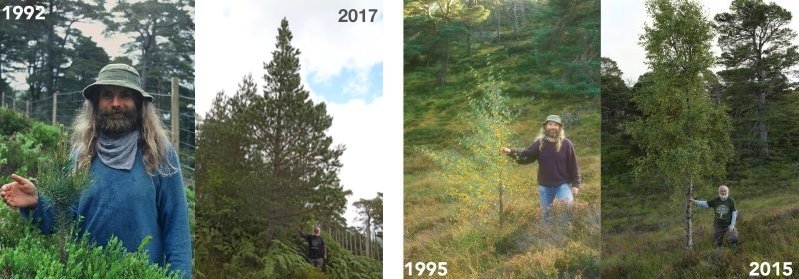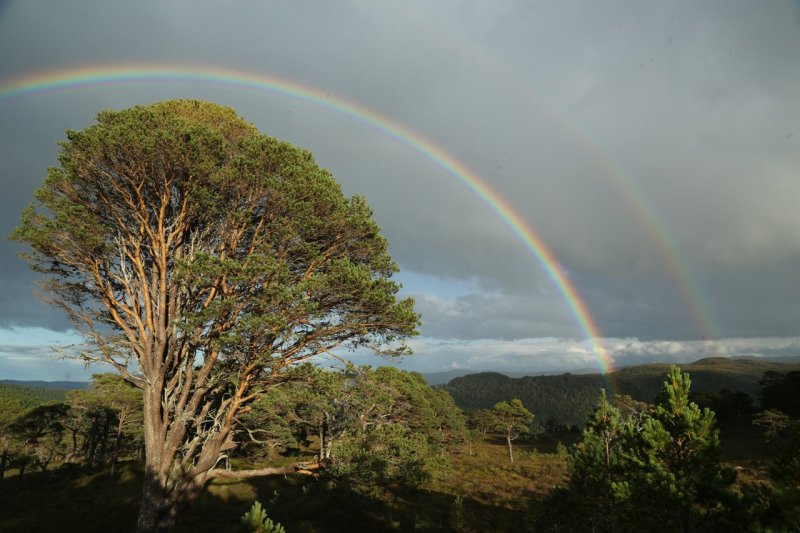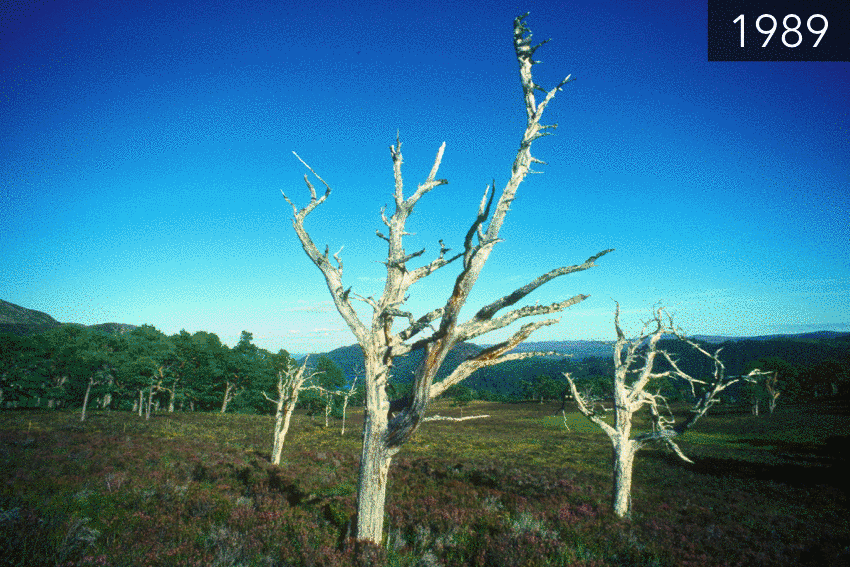Coille Ruigh na Cuileige
A quarter of a century ago in September 1990 we completed the construction of a 50 hectare fenced exclosure, Coille Ruigh, in Glen Affric. This was the first significant project we carried out with Forestry Commission Scotland where well-known botanist David Bellamy formally closed the last gate on the exclosure, to exclude grazing red deer.

Prior to the fence going up, Paul Blanchflower, a student at Edinburgh University, had carried out a study at Coille Ruigh na Cuileige which showed there was an estimated 100,000 Scots pine seedlings inside the area. The average age of these was 9.9 years, but the average height was just 8.5 cm, which showed how overgrazed they were. 95% of the seedlings had grazing damage (the other 5% were one year old seedlings and hence were too small to have been eaten by the deer), and some seedlings were up to 27 years old, but still only a few centimetres in height.
With this number of seedlings on the site, no planting was required, and since the fence was completed, no further management has been carried out to assist the return of the trees. The area has been left to allow natural regeneration to run its course.
In another part of the Coille Ruigh na Cuileige exclosure, three standing dead Scots pine snags provide a potent symbol for the historic decline of the forest, and the new generation of trees that the fence is enabling to grow there.The dead pines photographed just before the Coille Ruigh fence was put up in 1989 show the grazing pressure from red deer, and no young trees were able to grow. By September 2015, some of the regenerating pines are now taller than the dead trees. Those snags, as they are known, are virtually unchanged in the 26 years since the first photo was taken. The high resin content in the pines’ wood acts as a natural preservative, and skeleton pines such as these can persist for many decades, or even a century, before rotting away, and provide an important habitat for a range of dead wood-dependent species.


